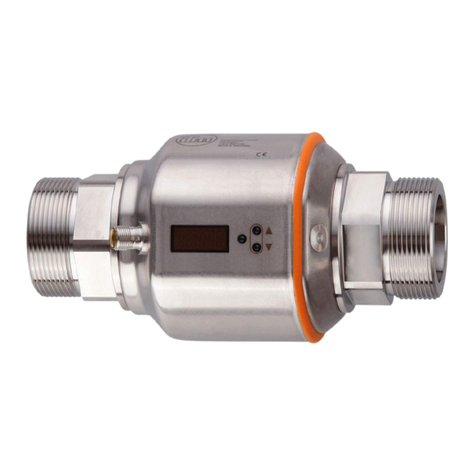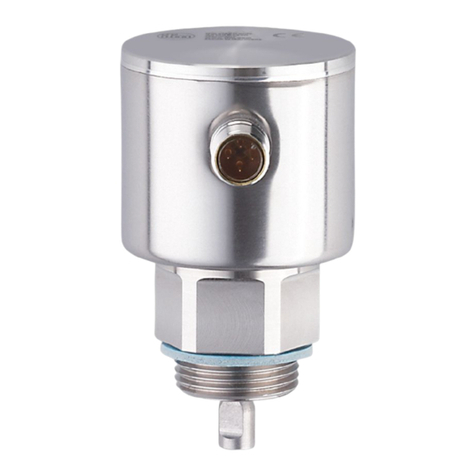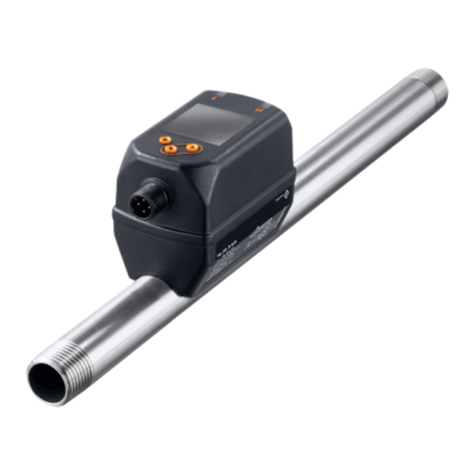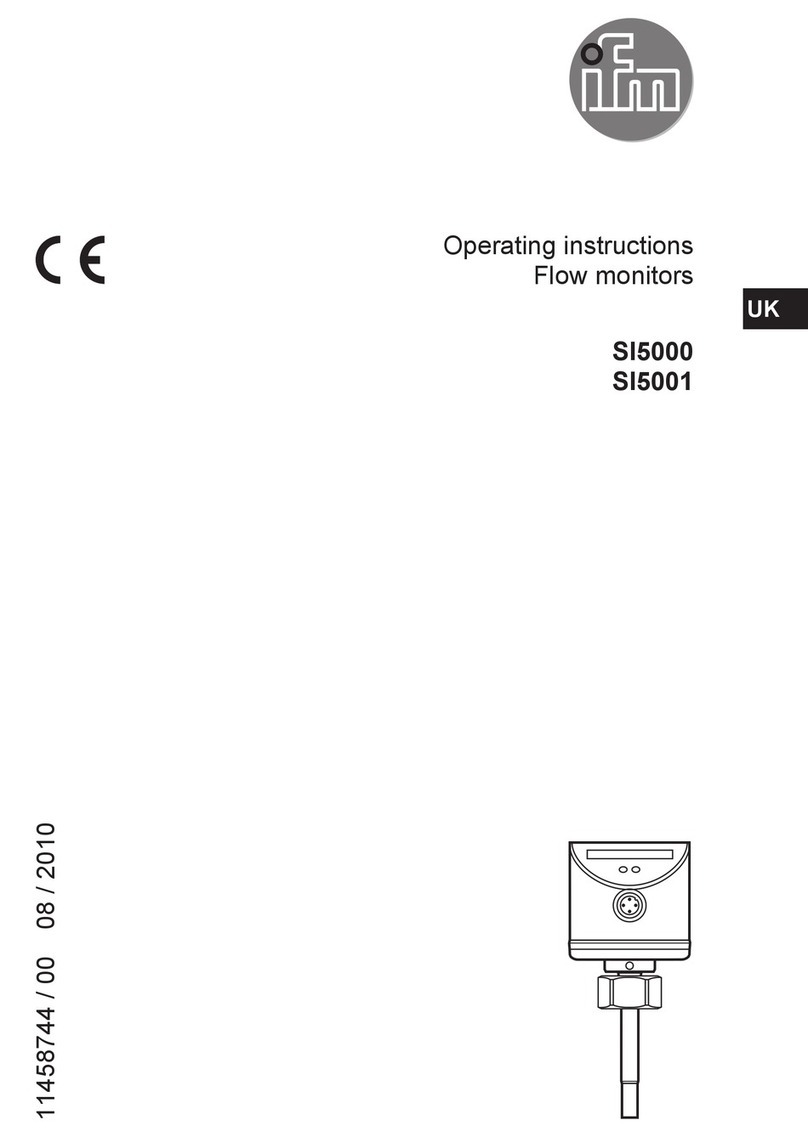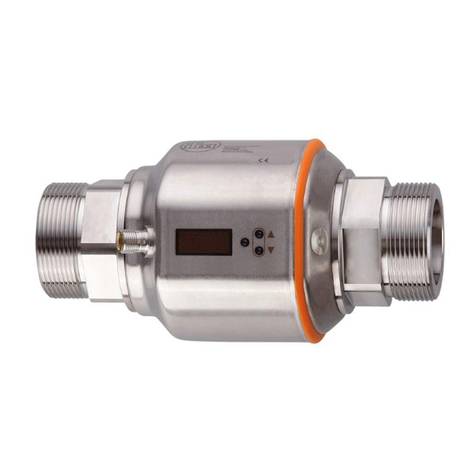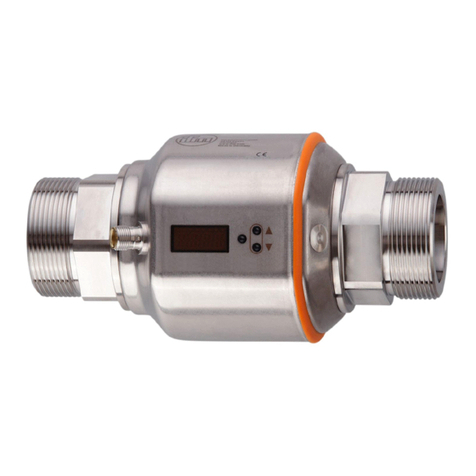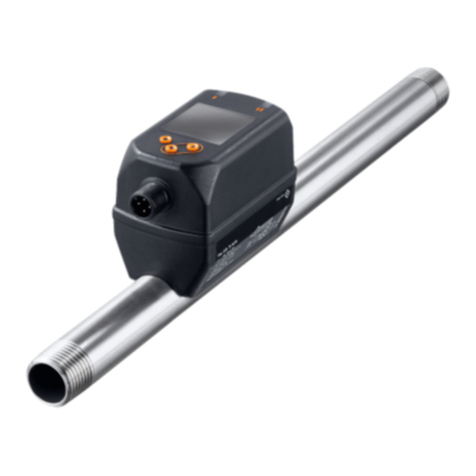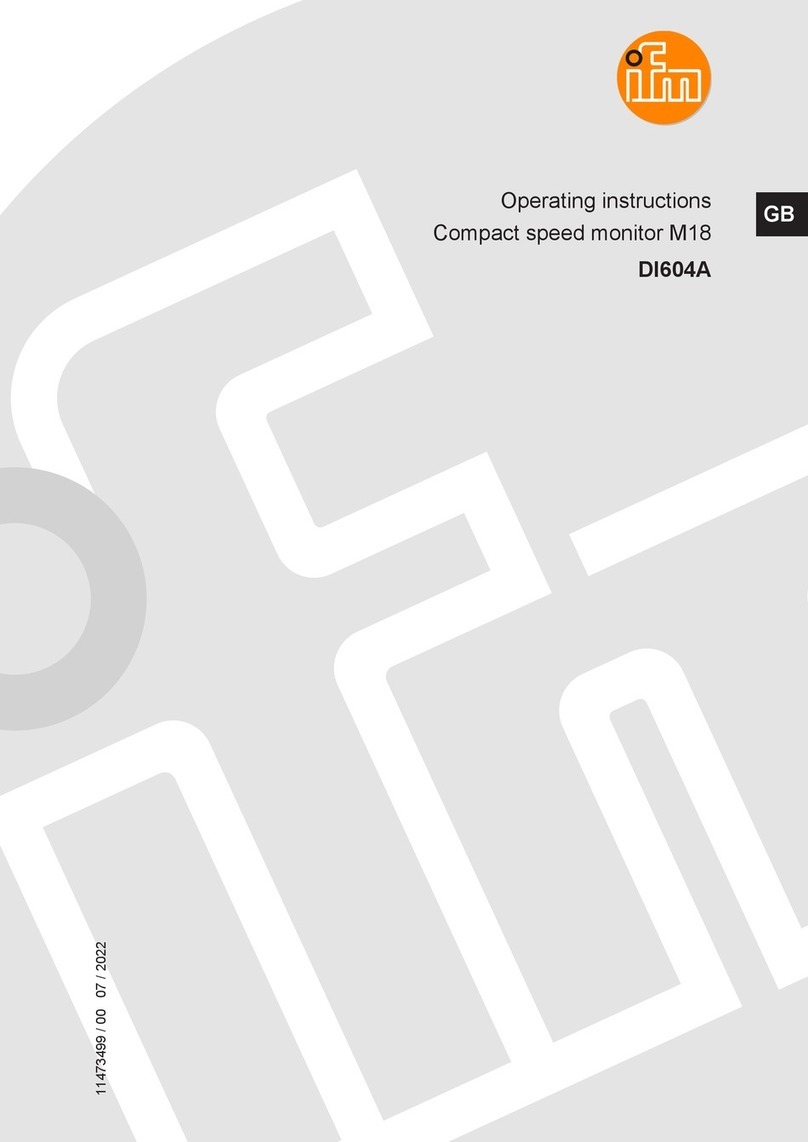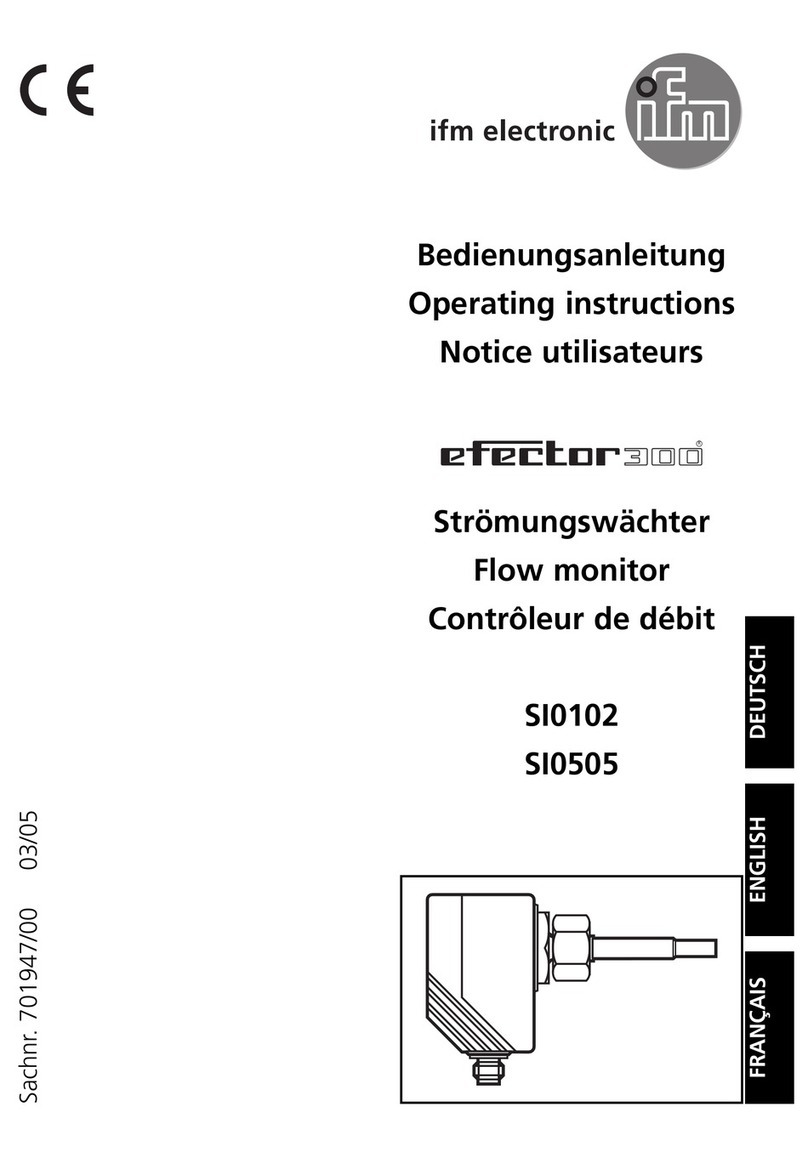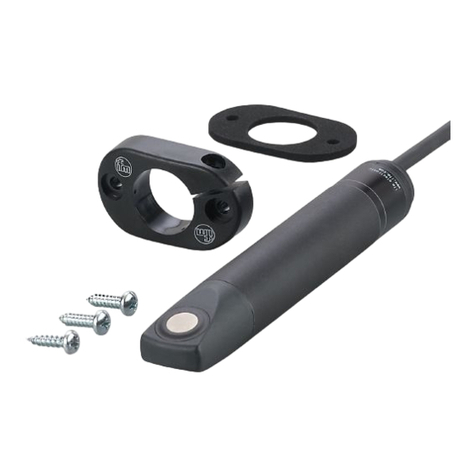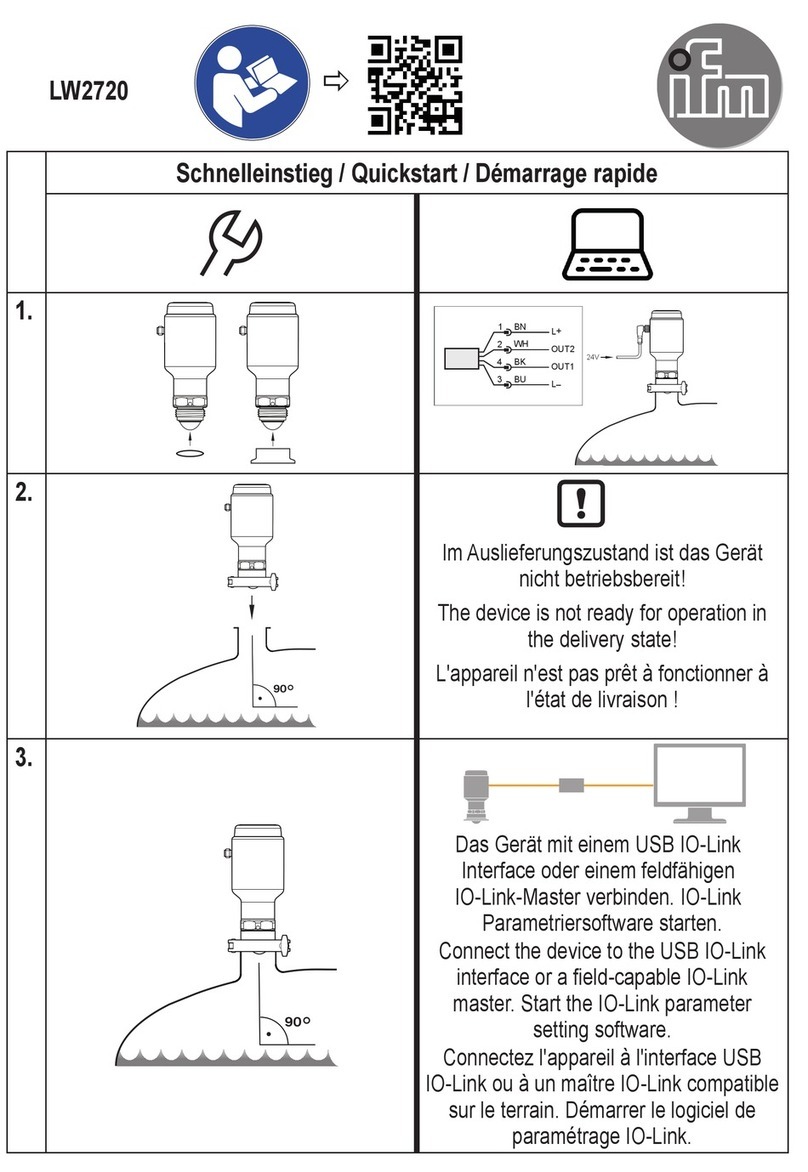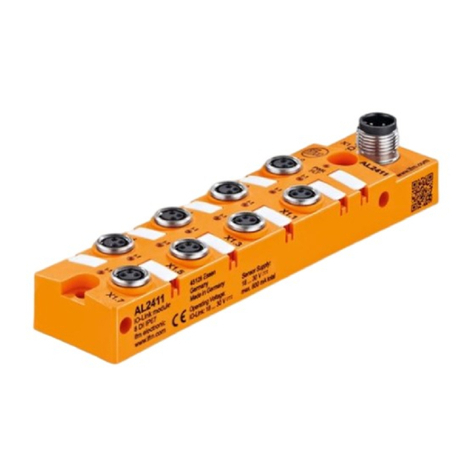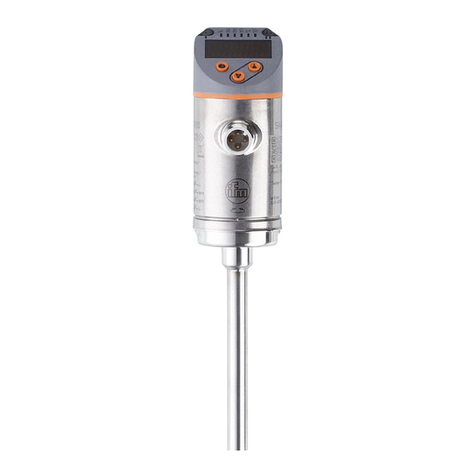3
DEUTSCH
Sicherheitshinweise
Befolgen Sie die Angaben der Bedienungsanleitung.
Nichtbeachten der Hinweise, Verwendung außerhalb der
nachstehend genannten bestimmungsgemäßen Verwendung,
falsche Installation oder Handhabung können
Beeinträchtigungen der Sicherheit von Menschen und
Anlagen zur Folge haben.
Das Gerät darf nur von einer Elektrofachkraft eingebaut,
angeschlossen und in Betrieb gesetzt werden, da bei der
Installation berührungsgefährliche Spannungen auftreten
können. Die sichere Funktion des Geräts und der Anlage ist
nur bei ordnungsgemäßer Installation gewährleistet.
Schalten Sie das Gerät extern spannungsfrei bevor Sie irgend-
welche Arbeiten an ihm vornehmen. Schalten Sie ggf. auch
unabhängig versorgte Relais-Lastkreise ab.
Vorsicht bei Bedienung im eingeschalteten Zustand. Sie ist
aufgrund der Schutzart IP 20 nur durch Fachkräfte zulässig.
Die Gerätekonstruktion entspricht Schutzklasse II (EN61010)
vorbehaltlich des Klemmenbereichs. In diesem ist erst bei voll-
ständig aufgesteckten Klemmen ein Schutz gegen zufälliges
Berühren (Fingersicherheit nach IP20) für die Bedienung durch
Fachpersonal gegeben. Deshalb ist das Gerät immer in einem
nur mit Werkzeug zu öffnenden Schaltschrank der
Mindestschutzart IP 54 zu installieren.
Bei DC-Geräten muß die externe 24 V-Gleichspannung gemäß
den Kriterien für sichere Kleinspannung (SELV) erzeugt und
zugeführt werden, da diese Spannung ohne weitere
Maßnahmen in der Nähe der Bedienelemente und an den
Klemmen für die Speisung angeschlossener Sensoren zur
Verfügung gestellt wird.
Bei Fehlfunktion des Geräts oder bei Unklarheiten setzen Sie
sich bitte mit dem Hersteller in Verbindung. Eingriffe in das
Gerät können schwerwiegende Beeinträchtigungen der
Sicherheit von Menschen und Anlagen zur Folge haben. Sie
sind nicht zulässig und führen zu Haftungs- und
Gewährleistungsauschluss.












